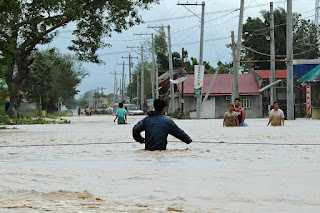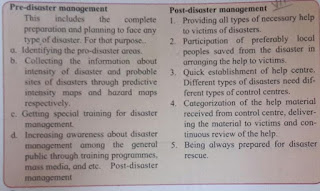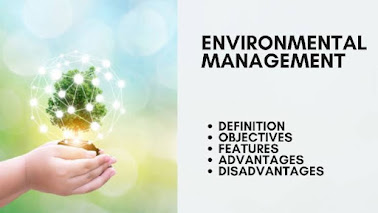Disaster and Disaster Management part 2
I also used certain books to assist me in creating my blog, which proved to be beneficial. I thought I'd offer some additional information about catastrophe and disaster management to you after noticing your interest in my last blog about reading and studying disaster management. So there you have it.
First Aid and emergency action: Disaster management is an action that is carried out with adequate preparation, organization, and coordination. It contains the following items:
1. Loss and risk prevention.
2. Tolerance is improving.
3. Providing disaster aid while limiting the severity and scope of the damage.
4. Prepare for the worst-case scenario.
5. In the event of a calamity, an immediate response is required.
6. Damages and catastrophe severity are assessed.
7. coordinating rescue efforts and assistance
8. Reconstruction and rehabilitation
The primary goal of first aid is to avoid death, worsening of health, and the commencement of the rehabilitation process. As a result, it's critical to be aware of the emergency procedures or first-aid procedures to be followed.
In part 1 of this blog, we covered some of the consequences, causes, and variables; if you haven't read that blog yet, click on the following link:
https://bustlingmindd.blogspot.com/2021/08/disaster-and-disaster-management-part-1.html
We occasionally have to confront disasters as a result of our ignorance. Some of the symbols presented are seen in everyday life. Those symbols must be taken seriously. These symbols are helpful in avoiding accidents.
Now we'll go over some of the most fundamental first aid procedures for emergencies, as well as some of the most vital aids to be aware of:
1. CPR: Cardiopulmonary resuscitation (CPR) is an emergency technique that combines chest compressions and artificial ventilation in an attempt to maintain brain function until further steps are taken to restore spontaneous blood circulation and breathing in a person who has gone into cardiac arrest. If the victim is unconscious, then after giving mouth-to-mouth respiration twice, the heart should be pressed down hard by pressing the chest with both palms. These two actions should be repeated alternately about 15 times. This is called cardiopulmonary resuscitation. It helps to bring the circulation back to normal.
2. ABC: A- AIRWAY; B- BREATHING; C- CIRCULATION
A. Airway: If the sufferer is having trouble breathing, the head should be tilted backward or the chin should be lifted to keep the respiratory route open.
B. Breathing: If the victim's breathing has ceased, artificial ventilation should be administered by mouth-to-mouth resuscitation.
C. Circulation: If the sufferer is unconscious, the heart should be pushed down forcefully by pushing the chest with both palms after administering mouth to mouth breathing twice. These two acts should be repeated 15 times in a row. This is referred to as cardio-pulmonary resuscitation (CPR) (CPR). It aids in the restoration of normal circulation.
For more information about ABC check out this link given below:
3. Bleeding: If the victim is hurt and the wound is bleeding, the wound should be covered with an antiseptic pad and pressure administered for 5 minutes with the thumb or palm.
4. Fracture and impact on vertebrae: If a bone is shattered, it is critical to immobilize the fractured portion. It may be done using any wooden rods, batons, or rulers that are available. The patient should be kept motionless on a firm stretcher if there is an impact to the back or spinal column.
5. For injuries like sprains, twisting, and contusion, the 'RICE' remedy should be applied:
Rest- Allow the victim to sit in a relaxed position.
Ice- Apply an ice pack to the injured part.
Compression- After the ice-pack treatment, the injured part should be massaged gently.
Elevate- The injured part should be kept in a raised/ elevated position.
Ways to transport the victim:
1. Cradle method: Useful for children and under-weight victims.
2. Human crunch method: If one of the legs is injured, the victim should be supported with minimum load on the other leg.
3. Carrying on a four-hand chair: This is useful when support is needed for the part below the waist.
Now, what actually is post and pre-disaster management? Let's have a look at this chart:









